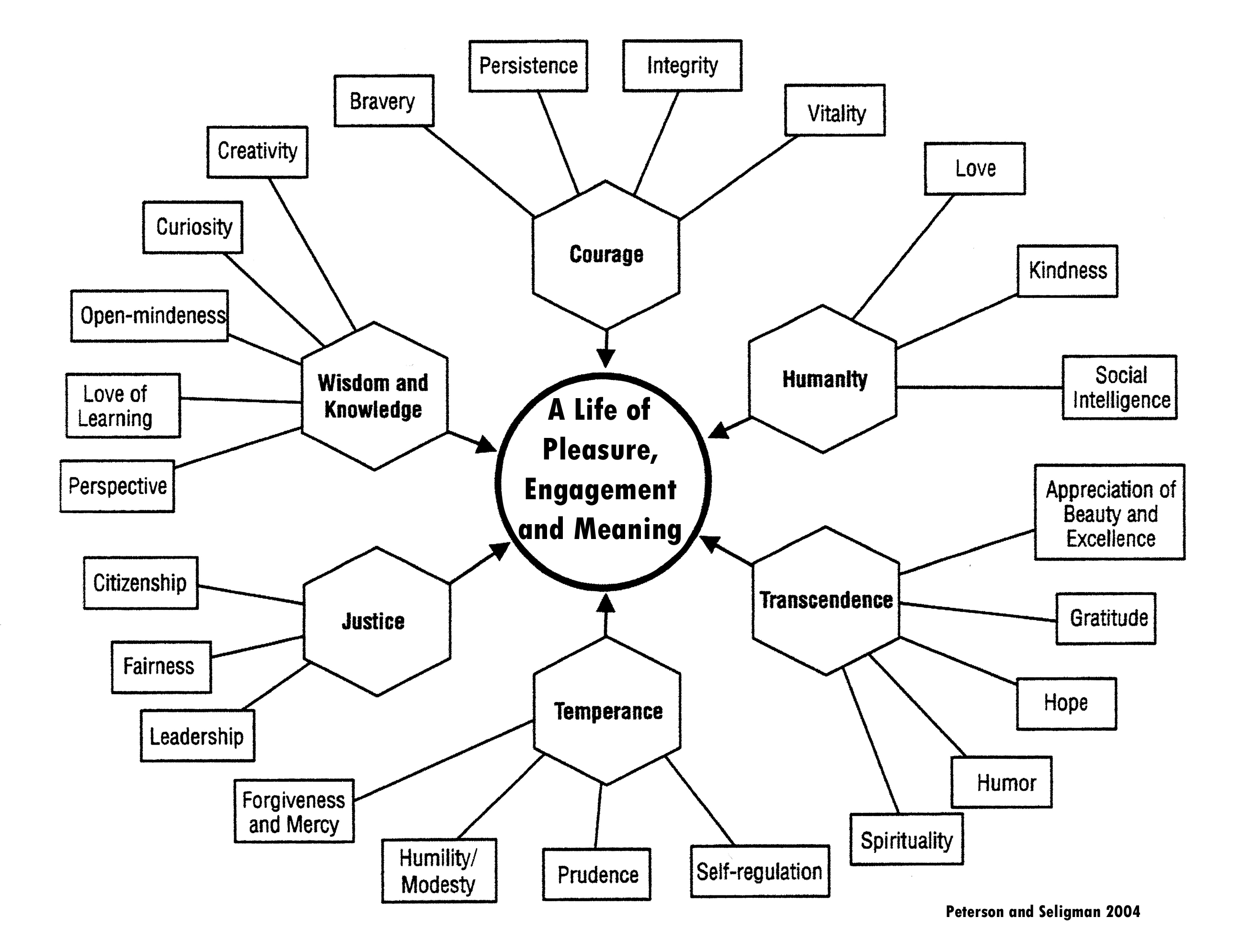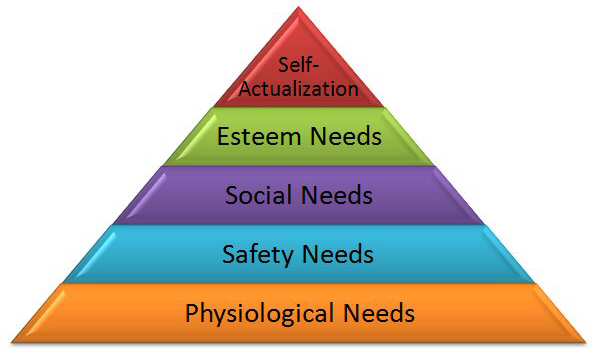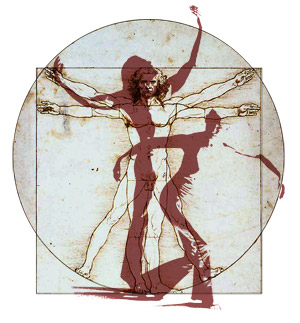January 25th, 2011
 In my leadership class at Northwestern we examine the latest thinking on how to leverage and manage corporate culture. One stream of thought that works extremely well in practice is to focus on small but key behaviors first. Indeed, the idea is not to try and change culture at all but design experiences where people see, try, hear stories about or receive rewards for new behaviors. If the new behaviors are cleverly linked to powerful outcomes then they will lead to a cascade of change, new mental models, attitudes and culture. The key is to uncover these vital behaviors and use cognitive design to create experiences around them that move hearts and minds.
In my leadership class at Northwestern we examine the latest thinking on how to leverage and manage corporate culture. One stream of thought that works extremely well in practice is to focus on small but key behaviors first. Indeed, the idea is not to try and change culture at all but design experiences where people see, try, hear stories about or receive rewards for new behaviors. If the new behaviors are cleverly linked to powerful outcomes then they will lead to a cascade of change, new mental models, attitudes and culture. The key is to uncover these vital behaviors and use cognitive design to create experiences around them that move hearts and minds.
A new article in Strategy+Business, Stop Blaming Culture, provides an excellent overview of the theoretical foundation behind this approach. The authors emphasize:
“… if you are seeking more accountability (for example), identify the types of ongoing behavior that embody that value. You might have to be specific: “I expect you to read, record, and respond to every customer complaint — and I will reward or penalize you accordingly.”
Being specific and behavioral is the key – read, record, respond to every… no ambiguity in that. Habituating such behaviors leads to more interaction and empathy with the customer, new ways of dealing with or avoiding customer complaints, up-selling, improved retention and so on. Over time, the new behaviors will generate a new culture if they are tied to key drivers of value in your business system.
What to change a culture? Find small new behaviors that drive big changes in value and design experiences that make it natural, fun, exciting and rewarding to try them out.

Posted in Behavior Change, Design | No Comments »
January 23rd, 2011
 How much neuroscience does a cognitive designer need to know? Is it important to know about neuroplasticity, mirror neurons, the pathways of brain drugs and what the latest brain scanning study tells us about the link between neuroanatomy and cognitive function? A general understanding of the neuroscience is important but mastering the details won’t help you do better design. Designers need a neuroscience boot camp.
How much neuroscience does a cognitive designer need to know? Is it important to know about neuroplasticity, mirror neurons, the pathways of brain drugs and what the latest brain scanning study tells us about the link between neuroanatomy and cognitive function? A general understanding of the neuroscience is important but mastering the details won’t help you do better design. Designers need a neuroscience boot camp.
Last year a colleague attended the University of Pennsylvania’s Neuroscience Boot Camp and suggested it provides just the level of understanding needed in a stimulating format.
The camp is run from the Center for Neuroscience & Society and is being held again this year from July 31 – Aug 10. A brief description:
“Through a combination of lectures, break-out groups, panel discussions and laboratory visits, participants will gain an understanding of the methods of neuroscience and key findings on the cognitive and social-emotional functions of the brain, lifespan development and disorders of brain function. “
It is geared for graduate students and professionals in education, law, ethics and other fields. Sounds just right for the cognitive designer interested in a refresher on the basics of neuroscience. Cost is $4500 including room. If interested, you have to submit an application no later that February 1st.

Posted in Events | No Comments »
January 20th, 2011
 I did a post earlier introducing MIX the Management Information Exchange, an exciting attempt to use open innovation to reinvent management for the 21st century. They are running a series of prizes, called M-prizes, to help focus the creativity of the crowd.
I did a post earlier introducing MIX the Management Information Exchange, an exciting attempt to use open innovation to reinvent management for the 21st century. They are running a series of prizes, called M-prizes, to help focus the creativity of the crowd.
I submitted an entry, To Engage and Impassion Employees we Must Learn to Manage Mental Energy, to the M-Prize for Human Capital Management. Here is the summary:
“A key to unleashing human capability in the workplace is to develop a management discipline geared toward creating intangible as well as economic value by meeting the psychological needs of key stakeholders. Such a management discipline must be based on a modern scientific understanding of how minds work and will need to provide frameworks for estimating, measuring, creating and optimizing mental energy.”
Check it out and leave comments. There are currently 65 other entries that are worth a peak. I will summarize the results from a cognitive design perspective and do additional posts.

Posted in Events, Examples, Related Fields | No Comments »
January 17th, 2011
 Probably not.
Probably not.
Emotional messaging, hard-hitting incentives and designed experiences all change behavior not information. For a case in point check out the article and interview:
Does Calorie-Labeling in Restaurants Lead to Healthier Eating?
Some details:
“In January 2009 King Country in Washington State, which includes Seattle and some of its suburbs, started requiring chains to make nutrition information available for all of its offerings, including visible calorie counts (which also needed to be on drive-through boards by August of that year). So researchers compared consumers’ food choices at several locations of the Mexican-style restaurant called Taco Time before and after calorie numbers were posted—as well as with Taco Times that were outside of the regulated area.”
A year of data showed zero change in eating habits. Having calorie data does not change eating behavior because we are not making analytical data-driven decision about how we eat.

Posted in Behavior Change | No Comments »
January 14th, 2011
 Leaders and innovators are keen on creating intangible value – happiness, meaning, emotional engagement, loyalty, passion and even the WOW factor. And why not, these mental states drive top performance, sales and marketplace success in the short and long haul. So there is growing interest in understanding how employees, customers and partners feel or will feel given some proposed change in product, work practice or business model. Knowing the emotional impact of a proposed change is savvy when it comes to creating, leveraging and protecting the intangible value of the firm.
Leaders and innovators are keen on creating intangible value – happiness, meaning, emotional engagement, loyalty, passion and even the WOW factor. And why not, these mental states drive top performance, sales and marketplace success in the short and long haul. So there is growing interest in understanding how employees, customers and partners feel or will feel given some proposed change in product, work practice or business model. Knowing the emotional impact of a proposed change is savvy when it comes to creating, leveraging and protecting the intangible value of the firm.
Care should be taken when asking people how they will feel in the future. Recent research indicates that we systematic neglect our own personality when predicting how we will feel about future events.
“Quoidbach and Dunn call this phenomenon “personality neglect,” which they tested in connection with the 2008 U.S. presidential election. In early October 2008, a large sample of Belgians predicted how they would feel the day after the U.S. presidential election if Barack Obama won and how they would feel if John McCain won. Then the day after the election, they reported how they actually felt, and completed personality tests. Nearly everyone in the study supported Obama, so most predicted they would be happy if he won.”
But it turns out supporters with a grumpy disposition remain so despite the happiness they predicted for themselves and the fact that their candidate won. They failed to factor their grumpy personality into an emotional forecast.
Care should be taken when designing surveys that involves emotional forecasting. Much better to empathize rather than analyze or swing the other way and collect physiological data rather than verbal reports when it comes to understanding emotional states.

Posted in Cognitive Bias, Psychographics, Technique | No Comments »
January 11th, 2011
 Successful innovations offer features we really want in an easy to use package that also delight the senses. Wildly successful innovations go beyond core functionality, usability and sensorial design to inspire, enlighten and energize by moving our hearts and minds. But how do we understand the hearts and minds of others in order to successfully innovate? One way is to use the science of character strengths.
Successful innovations offer features we really want in an easy to use package that also delight the senses. Wildly successful innovations go beyond core functionality, usability and sensorial design to inspire, enlighten and energize by moving our hearts and minds. But how do we understand the hearts and minds of others in order to successfully innovate? One way is to use the science of character strengths.
Character strengths, for example humility, curiosity or bravery not only help define who we are but are windows into what is most likely to move our hearts and minds. Fortunately, we can cost effectively measure character strengths in sufficient detail to inform a design or innovation process. The best resource I have found (and have blogged on them before) is the VIA Institute of Character. Their model includes six main categories (wisdom, courage, humanity, justice, temperance and transcendence) with 24 specific strengths.

In about 30-40 minutes you can take a personal survey online for free. It identifies your signature character strengths or the keys to getting your heart and mind going. You can use the instrument with your clients or employees (approx $40 per survey). They also offer plenty of training and support options for learning to use the instrument.
I have used this framework to successfully deconstruct popular designs and forward engineer applications several times. My work is still in the early stages. I would like to hear from readers interested or experienced in using a character-based approach to defining needs and features for cognitive design.
Image Source: Strengths Picture

Posted in Design, Psychographics | No Comments »
January 7th, 2011
 Analytics involves using data and math to make decisions and run the organization. With current technologies, oceans of data and advanced simulation and statical techniques what analytics means for all aspects of business – strategy, marketing, product development, innovation, customer service and real time operations – can be profound. That is one of the key findings in a new report, Analytics: The New Path to Value, from MIT’s Sloan School of Business and IBM. The study emphasizes that top performer see analytics as a differentiator and they achieve value, not so much by mastering data and technology but by doing good design.
Analytics involves using data and math to make decisions and run the organization. With current technologies, oceans of data and advanced simulation and statical techniques what analytics means for all aspects of business – strategy, marketing, product development, innovation, customer service and real time operations – can be profound. That is one of the key findings in a new report, Analytics: The New Path to Value, from MIT’s Sloan School of Business and IBM. The study emphasizes that top performer see analytics as a differentiator and they achieve value, not so much by mastering data and technology but by doing good design.
“The adoption barriers organizations face most are related to management and culture rather than being related to data and technology. The leading obstacle to widespread analytics adoption is lack of understanding of how to use analytics to improve the business, according to almost four of 10 respondents. More than one in three cite lack of management bandwidth due to competing priorities. Organizations that use analytics to tackle their biggest challenges are able to overcome seemingly intractable cultural challenges and, at the same time, refine their data and governance approaches.”
Developing the shared mental models needed to crank value from analytics is a cognitive design challenge. It requires a keen understanding of how managers really think including the cognitive biases involved in decision-making. It also means skill in using visualization, scenarios and other techniques to lower the cognitive load of data complexity. If we don’t shape the practices of analytics on the basis of how minds really work there is little chance of creating value from it.

Posted in Cognitive Training, Service Innovation, Technique | 1 Comment »
January 5th, 2011

A boost in self-esteem over sex, food, alcohol, friends or pay.
Often the key to great cognitive design comes from insight into deeply-felt and unsatisfied psychological needs (intellectual, affective, motivation, volitional) and finding a low friction way of satisfying them. For example, lottery tickets give us hope of “making in big in life”. And Facebook gives us an endless stream of gossip or inside information into the lives of others that we can use to evaluate ourselves.
So I am always on the lookout for new scientific studies that may reveal deeply felt and potentially unsatisfied needs. For example, the Journal of Personality just published a study that found:
“…people valued boosts to their self-esteem more than they valued eating a favorite food and engaging in a favorite sexual activity. Study 2 also showed that people valued self-esteem more than they valued drinking alcohol, receiving a paycheck, and seeing a best friend. Both studies found that people who highly valued self-esteem engaged in laboratory tasks to boost their self-esteem.”
The study group is US college students and boosts to self-esteem include, for example, a high grade or receiving a complement.
This finding has strong implications for anyone looking to improve education or design products and services for college students. It likely holds for other groups as well but what counts as a self-esteem boost is different.
Image Source: Maslow’s Hierarchy of Needs

Posted in Psychographics | No Comments »
January 2nd, 2011
 The last 30 years of research in the brain, cognitive and behavioral sciences have revealed 10 core traits about how minds work that are especially relevant for designers. Taken together, we can say these 10 traits make up a new view of how minds really work. For example, two of the traits reveal that our minds are:
The last 30 years of research in the brain, cognitive and behavioral sciences have revealed 10 core traits about how minds work that are especially relevant for designers. Taken together, we can say these 10 traits make up a new view of how minds really work. For example, two of the traits reveal that our minds are:
Embodied or grounded in sensory information and pattern recognition not abstract thought. We literally use our physical bodies to think, learn and do all things mental.
Metaphor Obsessed or constantly associating one concept with another as a primary means for remembering, making sense of the world, learning and creative expression.
The importance and subtle nature of these two traits are illustrated nicely in a new Scientific American article, Body of Thought: How Trivial Sensations Can Influence Reasoning, Social Judgments and Perception.
“But a rapidly growing body of research indicates that metaphors joining body and mind reflect a central fact about the way we think: the mind uses the body to make sense of abstract concepts. Thus, seemingly trivial sensations and actions-mimicking a smile or a frown, holding smooth or rough objects, nodding or giving a thumbs-up-can influence high-level psychological processes such as social judgment, language comprehension, visual perception and even reasoning about insubstantial notions such as time. ”
The interplay between metaphors and embodiment can be especially fruitful for cognitive designers. The article highlights research that looks at the impact of bodily metaphors (e.g. gestures that trigger metaphorical associations) and seemingly minor sensations (e.g. temperature, hardness, smoothness, smells etc.) on emotional processing, reasoning about past/future and moral cognition. For example, striking the so-called power pose can actually influence people to make bolder decisions.

Posted in Metaphors | 15 Comments »
December 29th, 2010
 In my philosophy of business workshop I argue that the most costly philosophical mistake management scholars and practitioners in the West make is differentiating thought and action. It is true that an artificial distinction between thinking and doing enhanced management control and predictability in the industrial era. But things have changed and we forgot the distinction is artificial. Now that knowledge and creativity are key the distinction leads to poor decision-making about job design, planned organizational change and innovation to name just a few areas. And it runs deep – plan versus implement, strategy versus operations, design versus construction, research versus manufacture and thinkers versus doers.
In my philosophy of business workshop I argue that the most costly philosophical mistake management scholars and practitioners in the West make is differentiating thought and action. It is true that an artificial distinction between thinking and doing enhanced management control and predictability in the industrial era. But things have changed and we forgot the distinction is artificial. Now that knowledge and creativity are key the distinction leads to poor decision-making about job design, planned organizational change and innovation to name just a few areas. And it runs deep – plan versus implement, strategy versus operations, design versus construction, research versus manufacture and thinkers versus doers.
When we try to learn or innovate, the current distinction between thinking and doing is most harmful. This is why techniques such as prototyping and ethnographic study in design or constructionism in education produce interesting results. They combine thinking, making and observing in deep and natural ways.
John Maeda, the new president of the Rhode Island School of Design and former head of MIT’s media lab, made a related point recently in Seed Magazine.
“After two decades as a student and faculty member at MIT, my newest experience at the Rhode Island School of Design (RISD) has reawakened me to the world of physical creation. RISD represents the ultimate culture of makers. There is no greater integrity, no greater goal achieved, than an idea articulately expressed through something made with your hands. We call this constant dialogue between eye, mind, and hand “critical thinking—critical making.” It’s an education in getting your hands dirty, in understanding why you made what you made, and owning the impact of the work in the world. It’s what artists and designers do. ”
He is making a broader argument for injecting art and design into science education to take the engine of innovation in the US to the next level. The idea is to go beyond our technology-centric approach to innovation by adding art, emotion and intuition into the process. To do this we must integrate thinking and making.
Critical (Thinking + Making) = Innovation Squared because it is one way to smash the artificial distinction between thinking and doing.
Image Source: Blogging Innovation

Posted in Design, Service Innovation | No Comments »
 In my leadership class at Northwestern we examine the latest thinking on how to leverage and manage corporate culture. One stream of thought that works extremely well in practice is to focus on small but key behaviors first. Indeed, the idea is not to try and change culture at all but design experiences where people see, try, hear stories about or receive rewards for new behaviors. If the new behaviors are cleverly linked to powerful outcomes then they will lead to a cascade of change, new mental models, attitudes and culture. The key is to uncover these vital behaviors and use cognitive design to create experiences around them that move hearts and minds.
In my leadership class at Northwestern we examine the latest thinking on how to leverage and manage corporate culture. One stream of thought that works extremely well in practice is to focus on small but key behaviors first. Indeed, the idea is not to try and change culture at all but design experiences where people see, try, hear stories about or receive rewards for new behaviors. If the new behaviors are cleverly linked to powerful outcomes then they will lead to a cascade of change, new mental models, attitudes and culture. The key is to uncover these vital behaviors and use cognitive design to create experiences around them that move hearts and minds.








